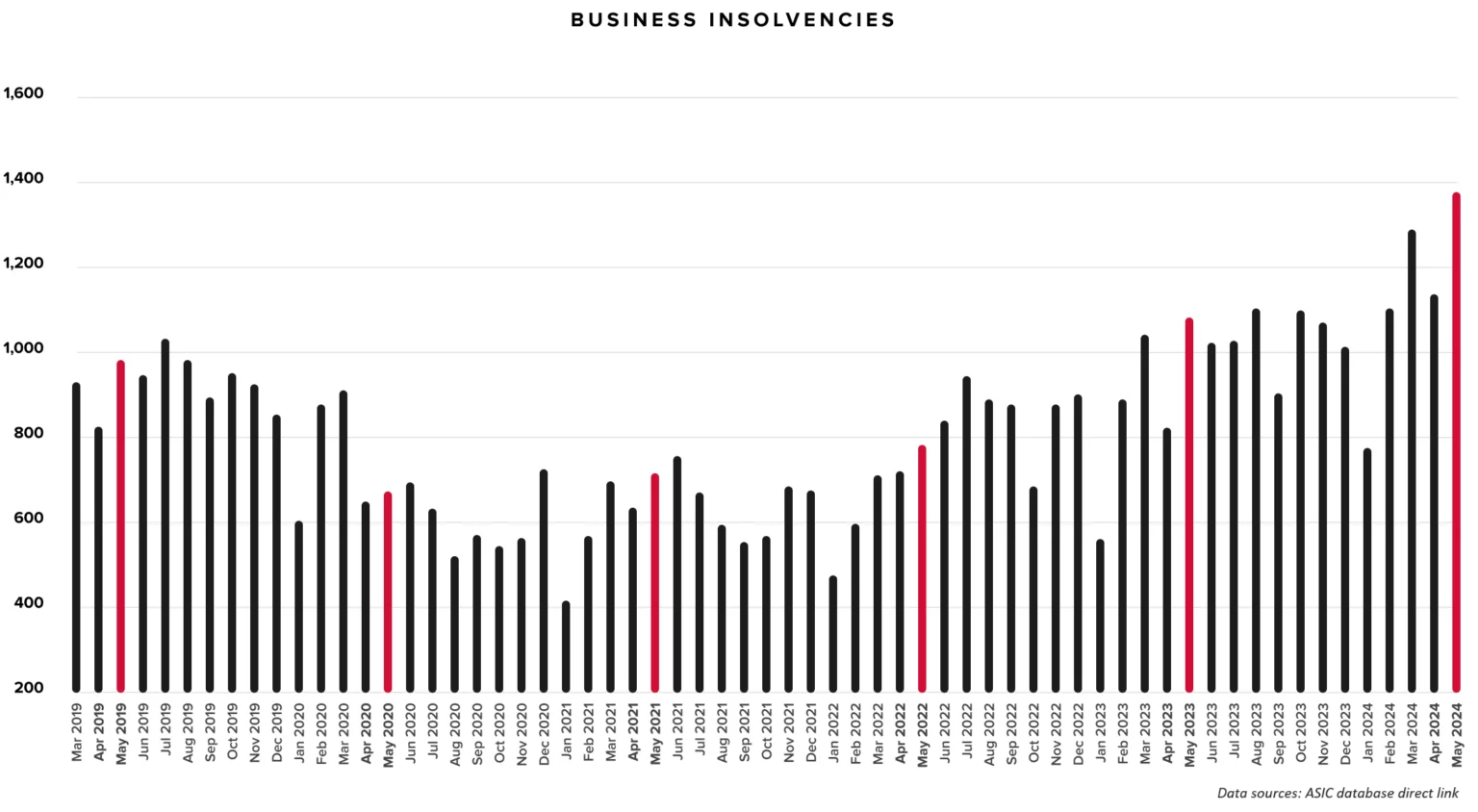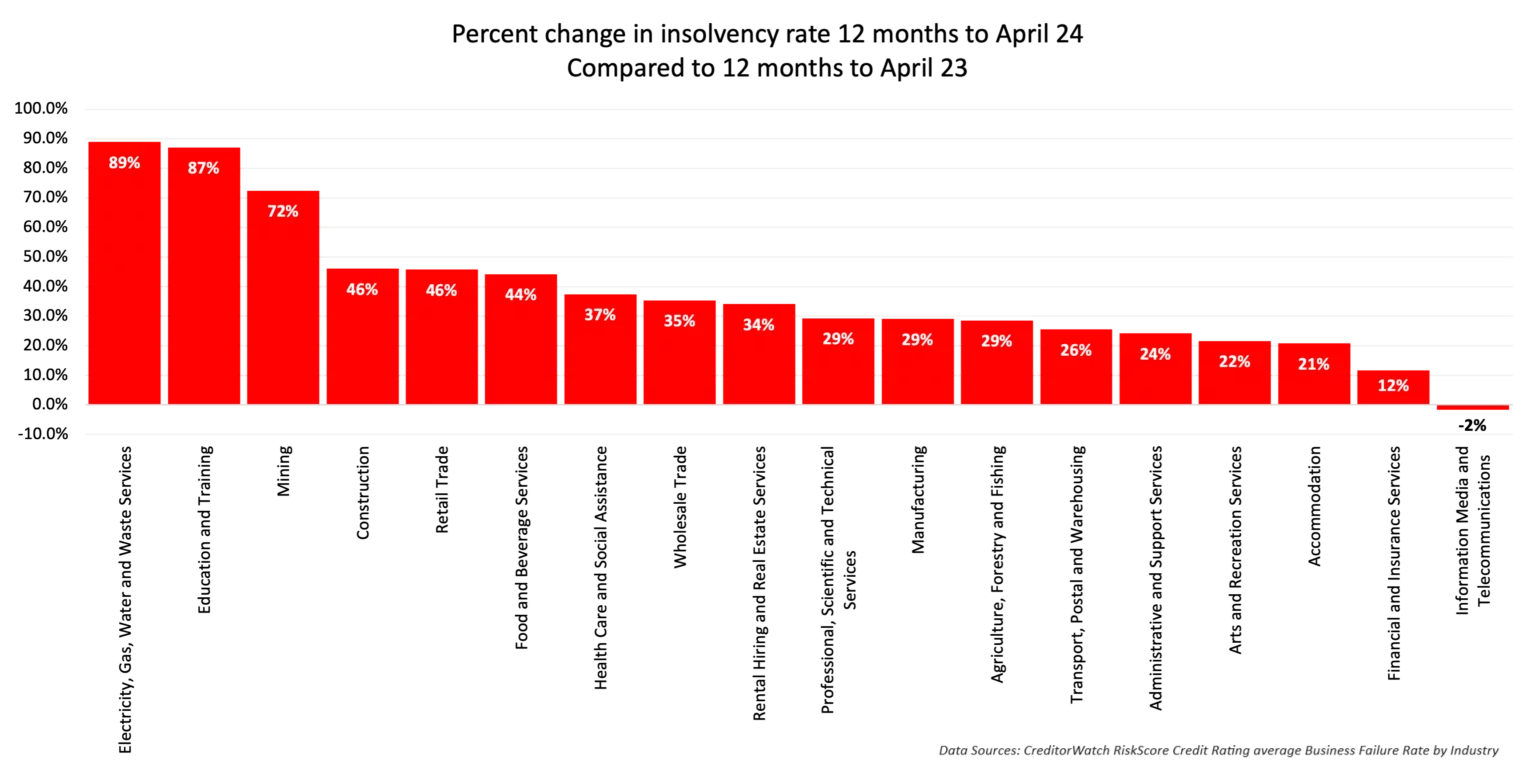Insolvency rate rises 38% on average across all industries

Insolvencies for Australian businesses are now at a record high as the impacts of stubbornly high inflation, interest rate increases and declining consumer demand squeeze margins, the latest CreditorWatch Business Risk Index (BRI) has indicated.
The credit reporting bureau noted a 38% year-on-year increase in insolvencies, with a total rise of 34% compared to the previous year and 41% above pre-COVID levels.

The most affected sectors include electricity, gas, water and waste services, with an 89% increase, followed by education and training (87%), and mining (72%). The information, media and telecommunications sector was the only one to show improvement, with a 2% decrease in insolvency rates.
Small businesses in the electricity, gas, water and waste services sector are particularly impacted, entering external administration at a rate of 1.16%, up from 0.51% in May 2023. The mining sector faces rising insolvencies in both small and large businesses, particularly in mining services. Education and training sector insolvencies are predominantly among small businesses, exacerbated by declining international student numbers.

Business-to-business payment defaults set a new record in May, increasing by 21% from April and 58% year-on-year. CreditorWatch reports a strong correlation between payment defaults and business failure, with a 20% chance of failure for businesses with one default, rising to 42% with two defaults and 62% with three.
Meanwhile, court actions have surged past pre-COVID levels, up 63% year-on-year, indicating creditors have resumed regular collection activities.
According to Patrick Coghlan (pictured above left), chief executive of CreditorWatch, the combination of deteriorations in CreditorWatch’s key measures of business health reflects the increasing impact of cost-of-living pressures on consumers.
“Multiple interest rate hikes and stubbornly high inflation have forced consumers at all income levels to cut back on spending,” Coghlan said. “We don’t expect a meaningful turnaround in consumer confidence until the impact of at least two rate cuts has been felt, which won’t be until well into 2025.
“The only bright-spot for households is next-month’s tax cuts, although we don’t see much of this going to discretionary spending.”
Anneke Thompson (pictured above right), CreditorWatch chief economist, pointed out that increasing cash flow problems are evidenced by record high trade payment defaults.
“We have known for some time now that consumers have pulled back on spending quite dramatically as high interest rates and inflation smashed household budgets,” Thompson said.
“This trend took some time to flow through to businesses, but is now showing up in the data in the form of increasing late payment rates and rising court actions, as well as increased business failures and insolvencies.”
Despite tax cuts in July 2024, CreditorWatch predicts that the remainder of the year will be challenging for businesses, with high interest rates persisting and economic activity focused on non-discretionary goods and services.
CreditorWatch said the outlook for the Australian economy remains cautious, and while the labour market is strong, record migration may have masked underlying economic stress. As migration moderates, it believes businesses will likely face continued financial pressure until the Reserve Bank of Australia provides interest rate relief.
Want to be regularly updated with mortgage news and features? Get exclusive interviews, breaking news, and industry events in your inbox – subscribe to our FREE daily newsletter. You can also follow us on Facebook, X (formerly Twitter), and LinkedIn.



